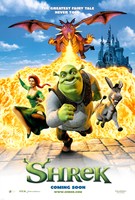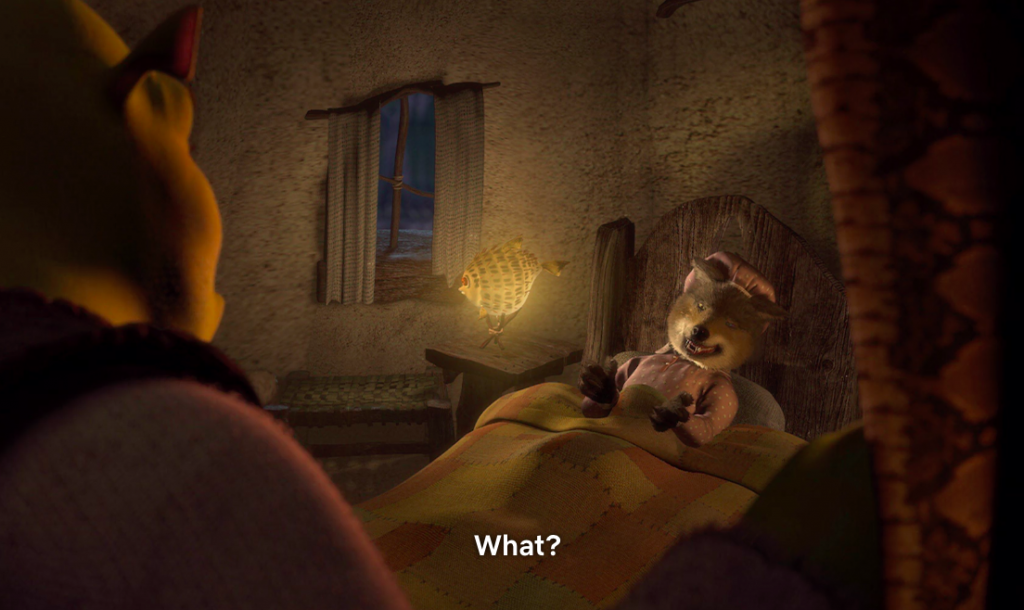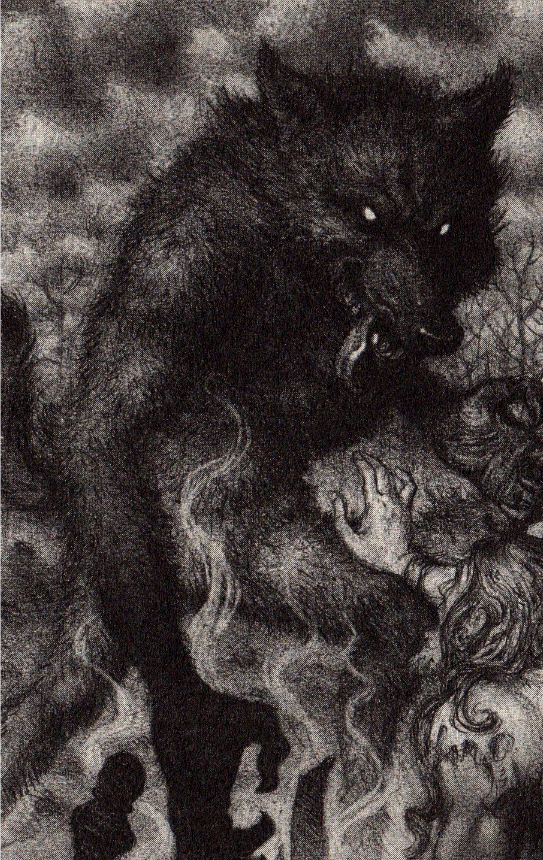
Shrek (2001) is a film that invests in the fairytale tropes found in literature to create humour. Characters are typecast and stereotypes are flung at the audience in the beginning scenes of the movie. This is important for establishing the roles of animals in the film, because most of them, being objects of fairytale discourse, are anthropomorphised. Therefore, the audience engages with the animals, as by being removed from their original stories and thrust together, they enable an novel and intelligent humour.
At Shrek’s swamp, in a camera cut to Shrek’s bed, the non-diegetic music imitates the movement of pulling the curtain aside, with both image and sound sharply stopping when we see the bed is taken by a wolf in a pink nightgown and a nightcap (Fig. 1). When comparing an original representation of The Big Bad Wolf, as seen in Figure 2, this is a humorous image of the Big Bad Wolf as it is an unexpected play on the well known antagonist. Like the original wolf, he is fulfilling his anticipated role as ‘Grandma’ in the original story of Red Riding Hood. When he speaks he is presented as a deep-voiced male with a thick New York accent, which is an amusing human quality to have prescribed to him. By saying ‘What?’ in a nonchalant tone, the wolf is questioning Shrek as to why he is surprised, because this his normal role. The wolf has been banished to the swamp along with many others, and the only way he can retain his identity outside of his story is to remain within the realms of the fairytale: in this case by finding the nearest bed and pretending to be Grandma. Shrek’s reaction is to throw the wolf out of the house, like he pushed Donkey outside in the previous scene. This suggests that Shrek believes animals must remain outside. He is distancing himself from animals, neither fitting in the human or animal binaries, making him a misfit. Ironically, an ogre is not a human or an animal, therefore he fits better into the fairytale realm than most.

| Fig. 1. Big Bad Wolf in Shrek’s bed. |

When Shrek steps outside there are a sequence of close-up shots, zooming in on the disrupted lives of the creatures. For instance, the three bears are depicted as refugees, with baby bear crying, and the father, wearing human’s glasses, looking deeply troubled. Great attention is given to detailing the stereotypes and their features, such as the three little pigs having different hats for their individual jobs. These insights into the different worlds of fairytales are highly engaging, as they show certain animals to have identities defined by their aesthetics.
Within Shrek, a certain ironic humour is created within these fairytale animals. The filmmakers have utilised generic tropes that the majority of an audience would recognise. The animals are more identifiable than the humans. The witches and dwarves are generic fairytale figures. However, the animals are from specific stories showing they have a more prominent role in children’s literature.Animals have been used here to create humour, as audiences enjoy the inclusion created by comedy.